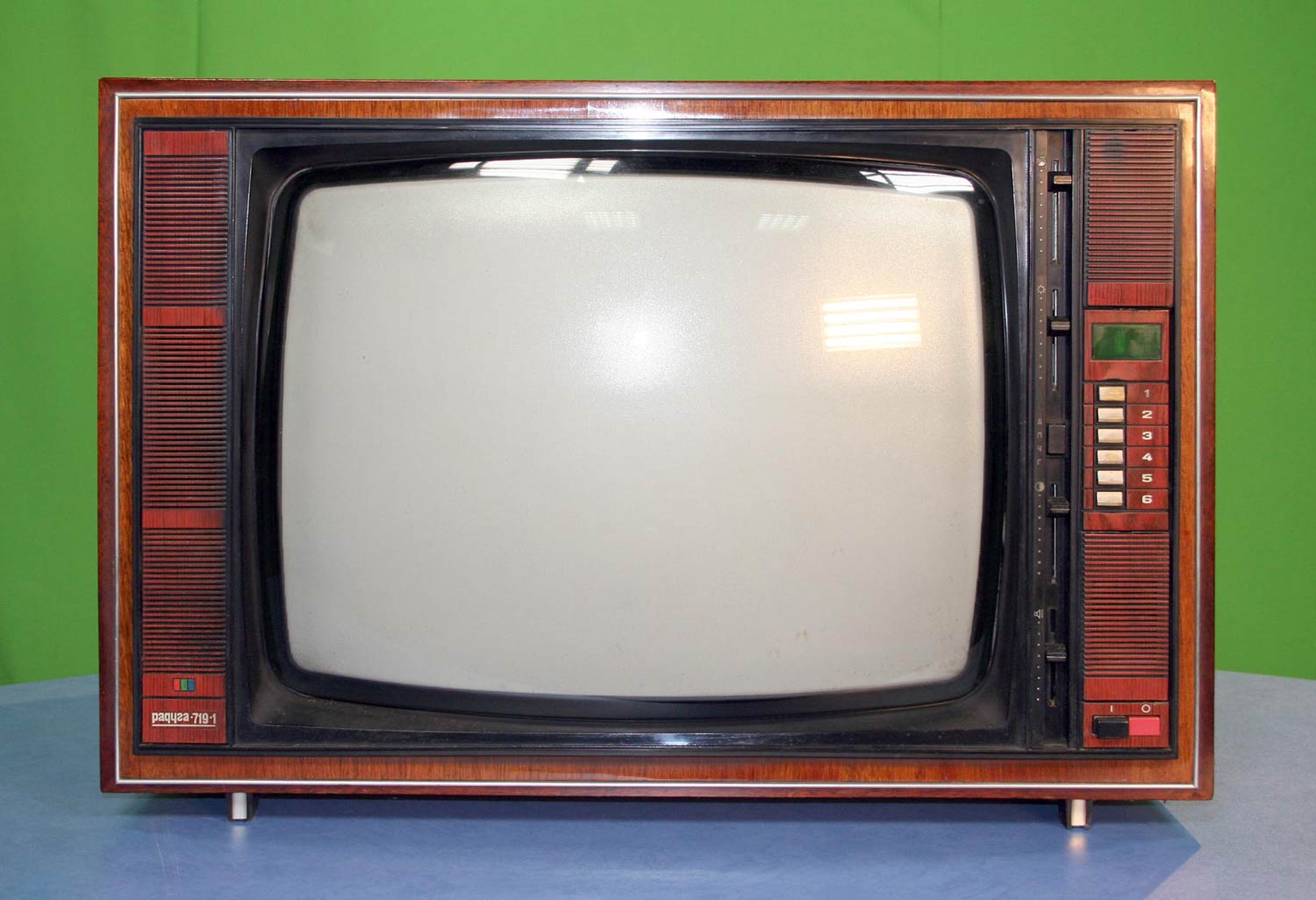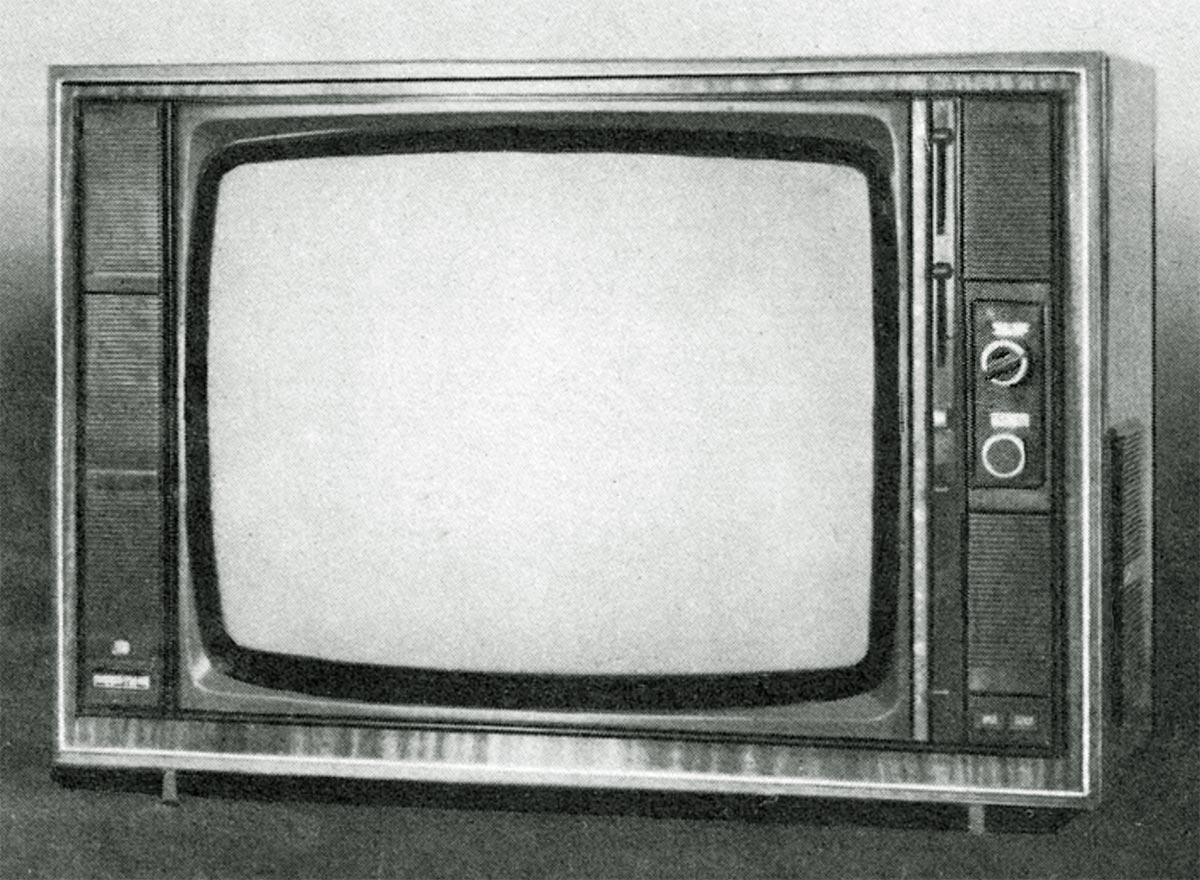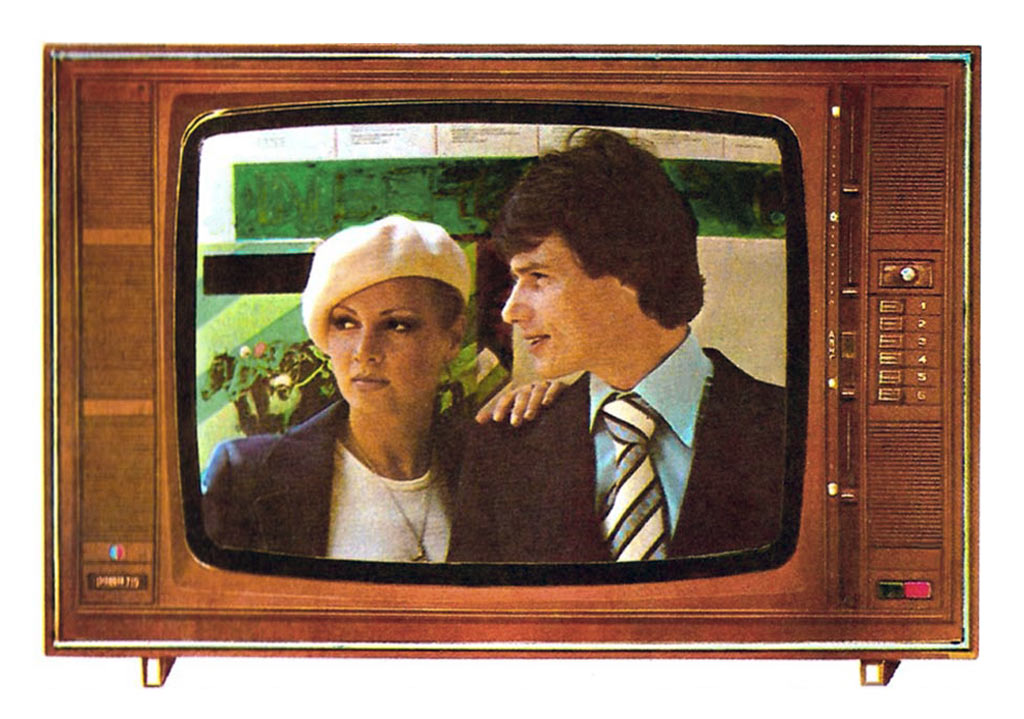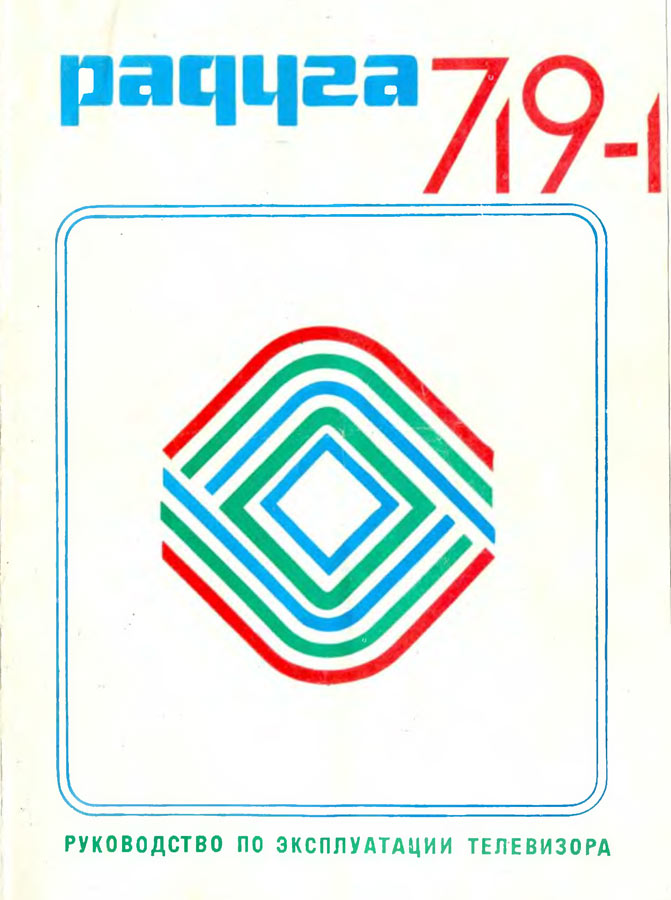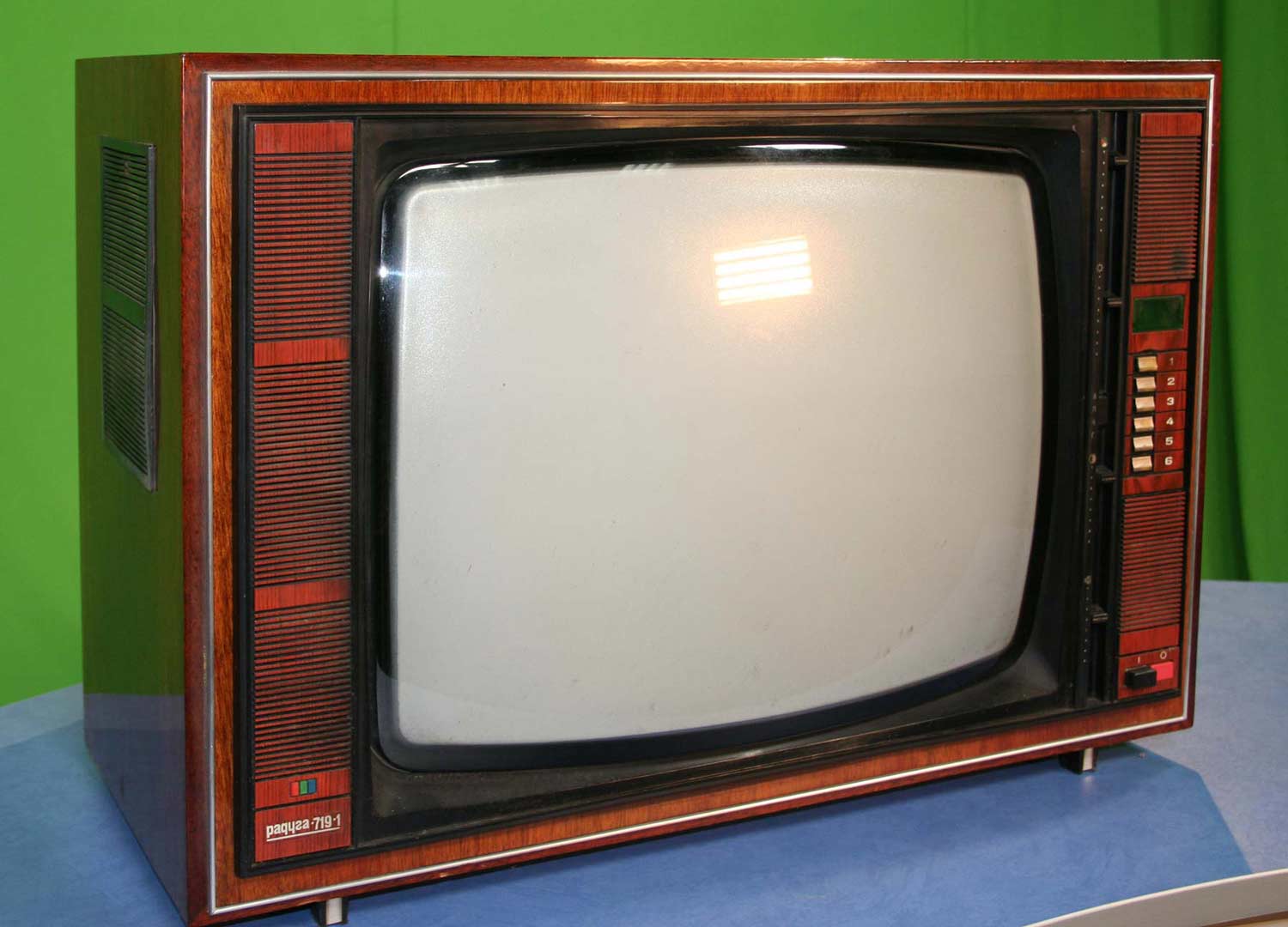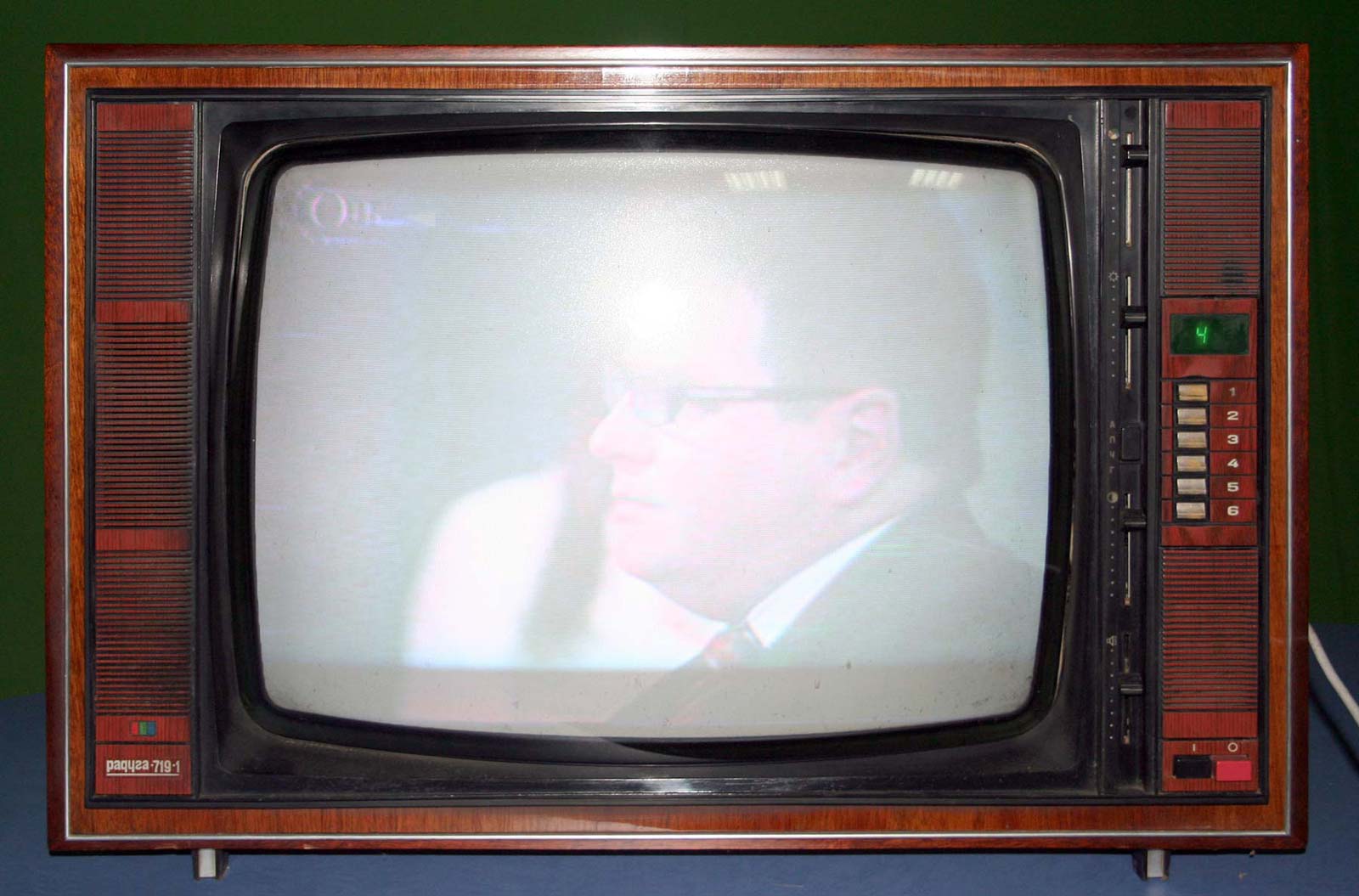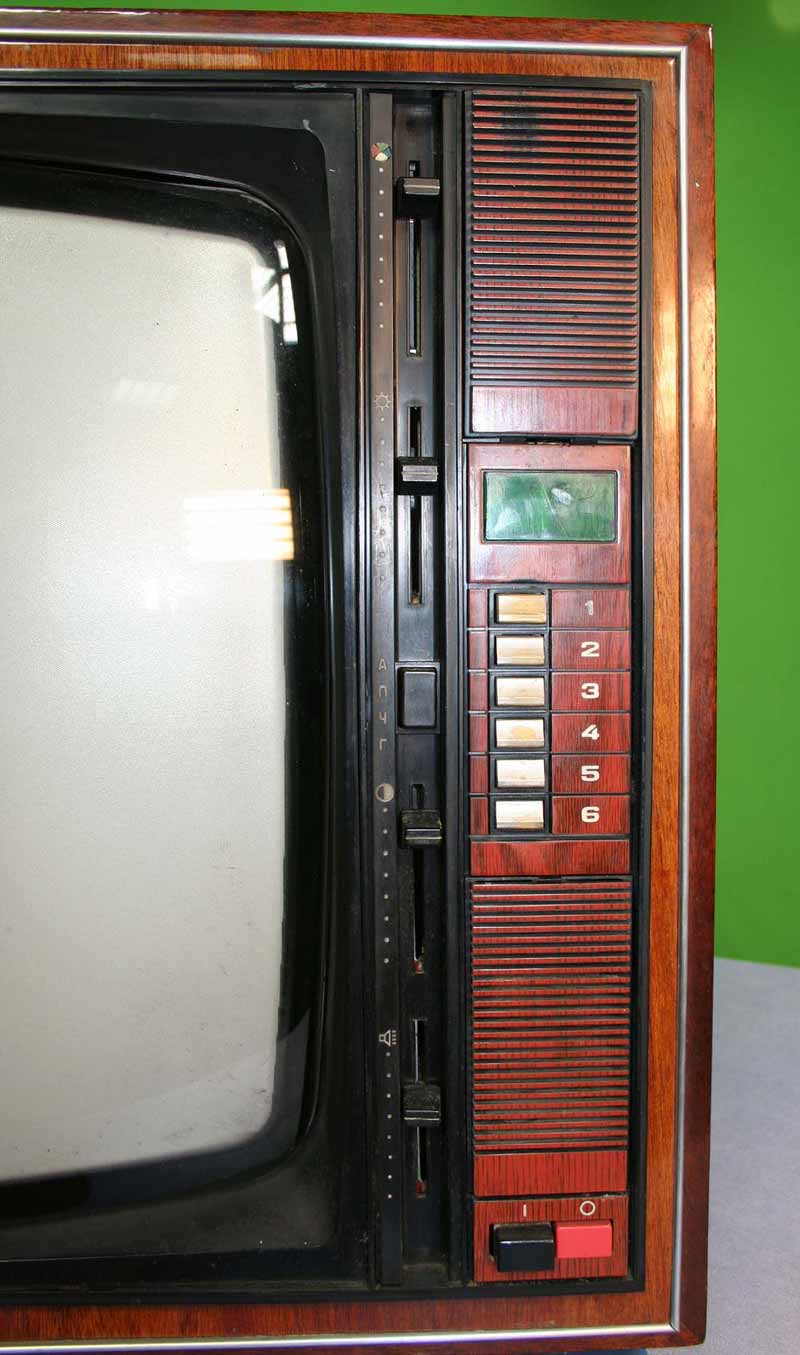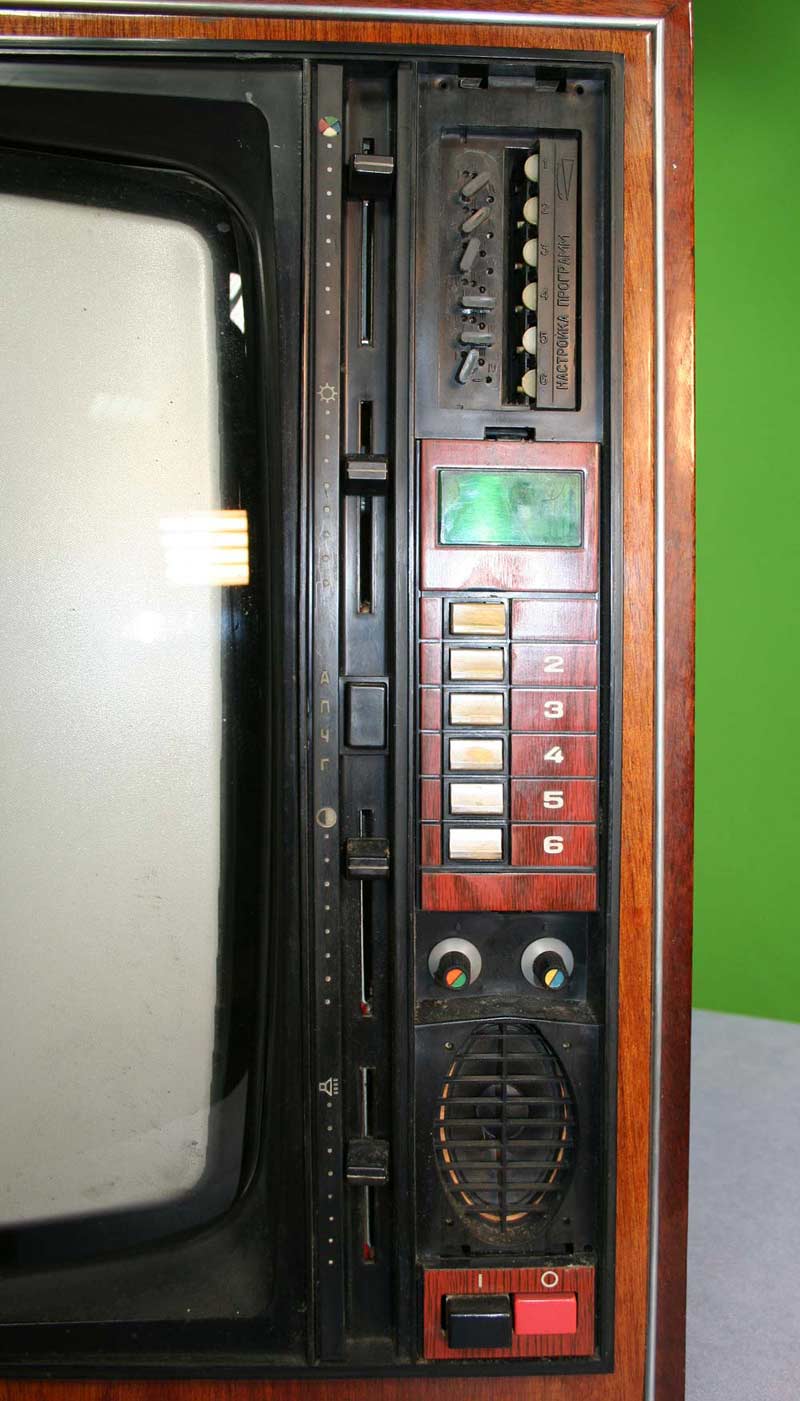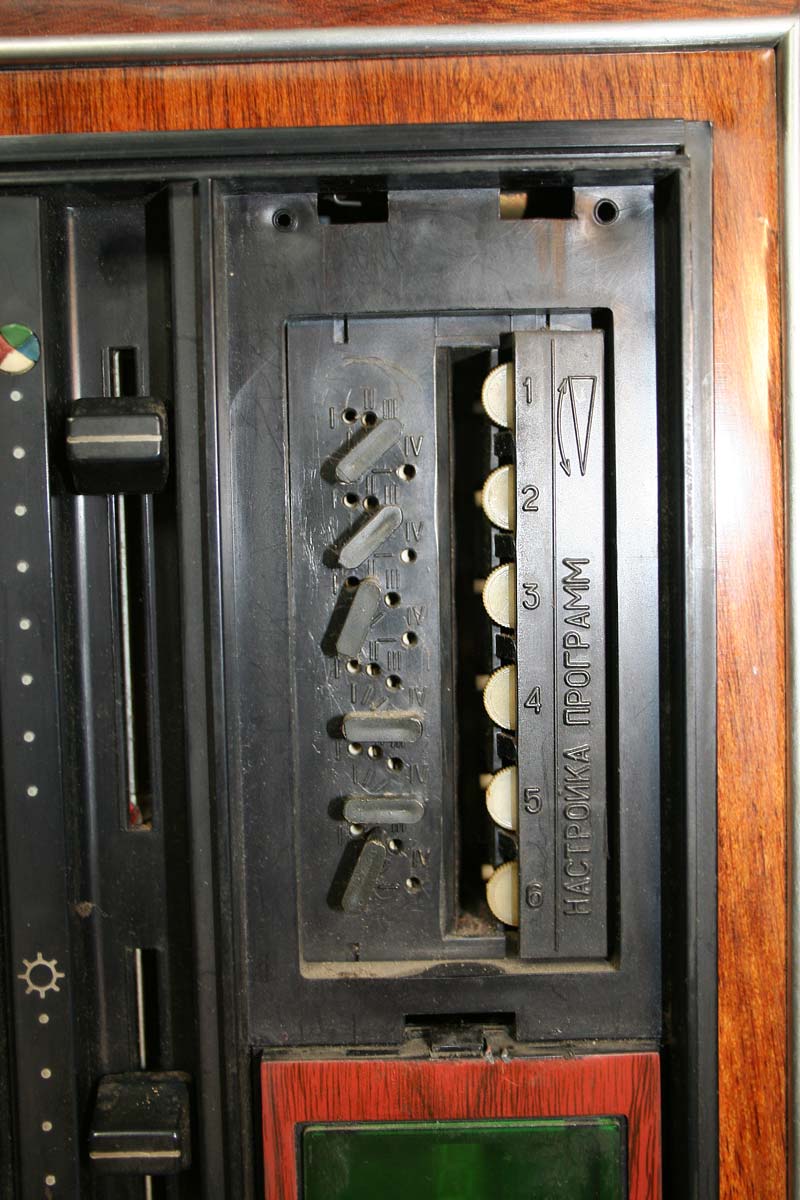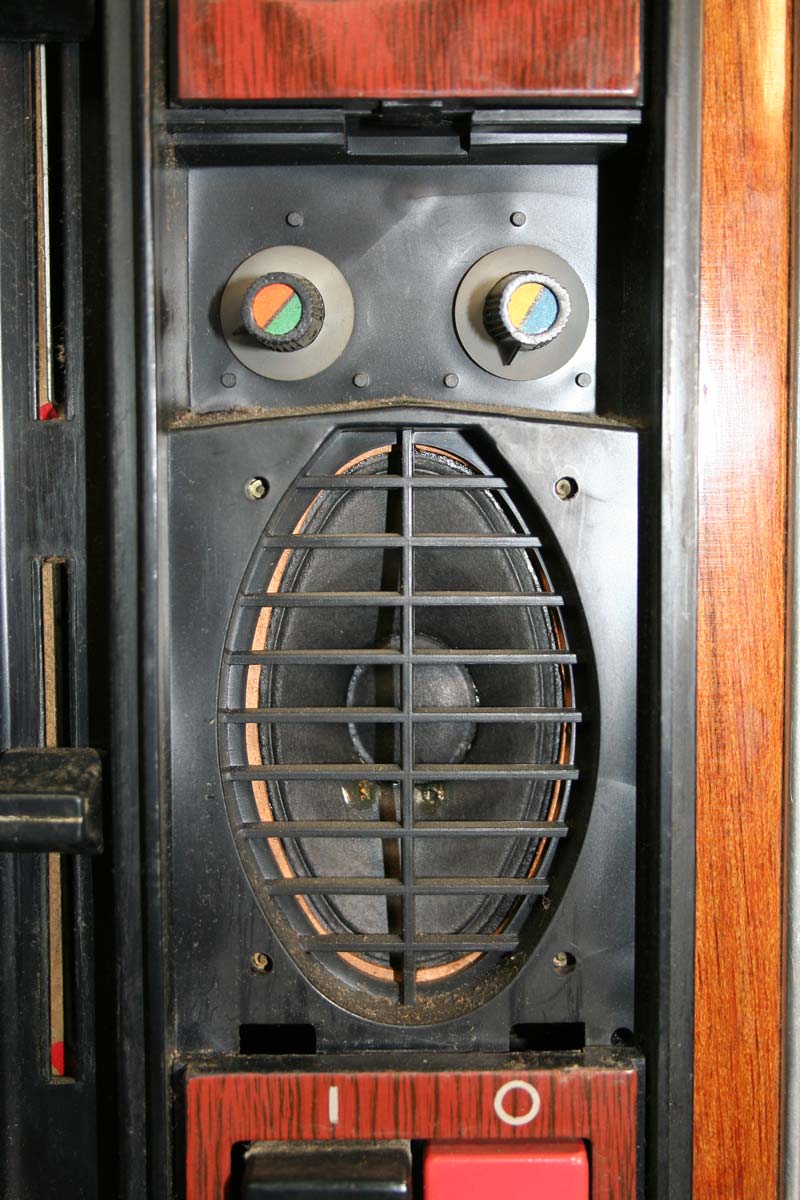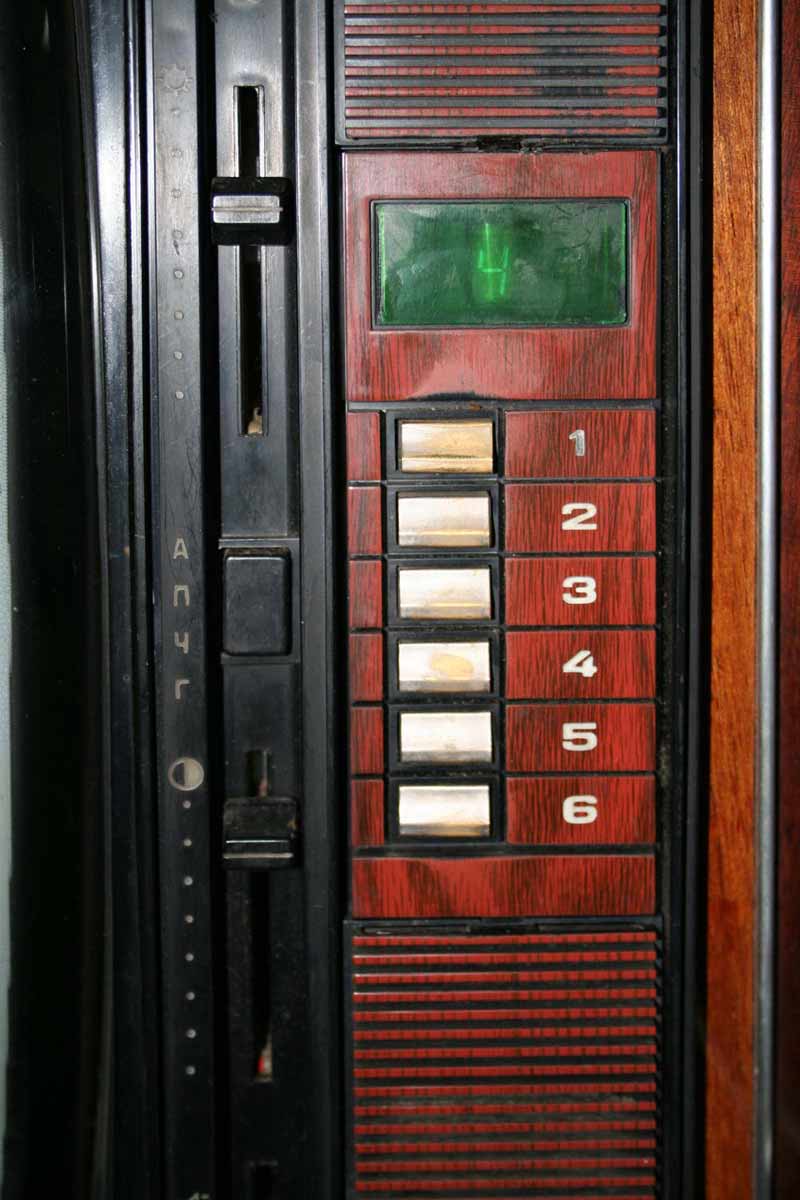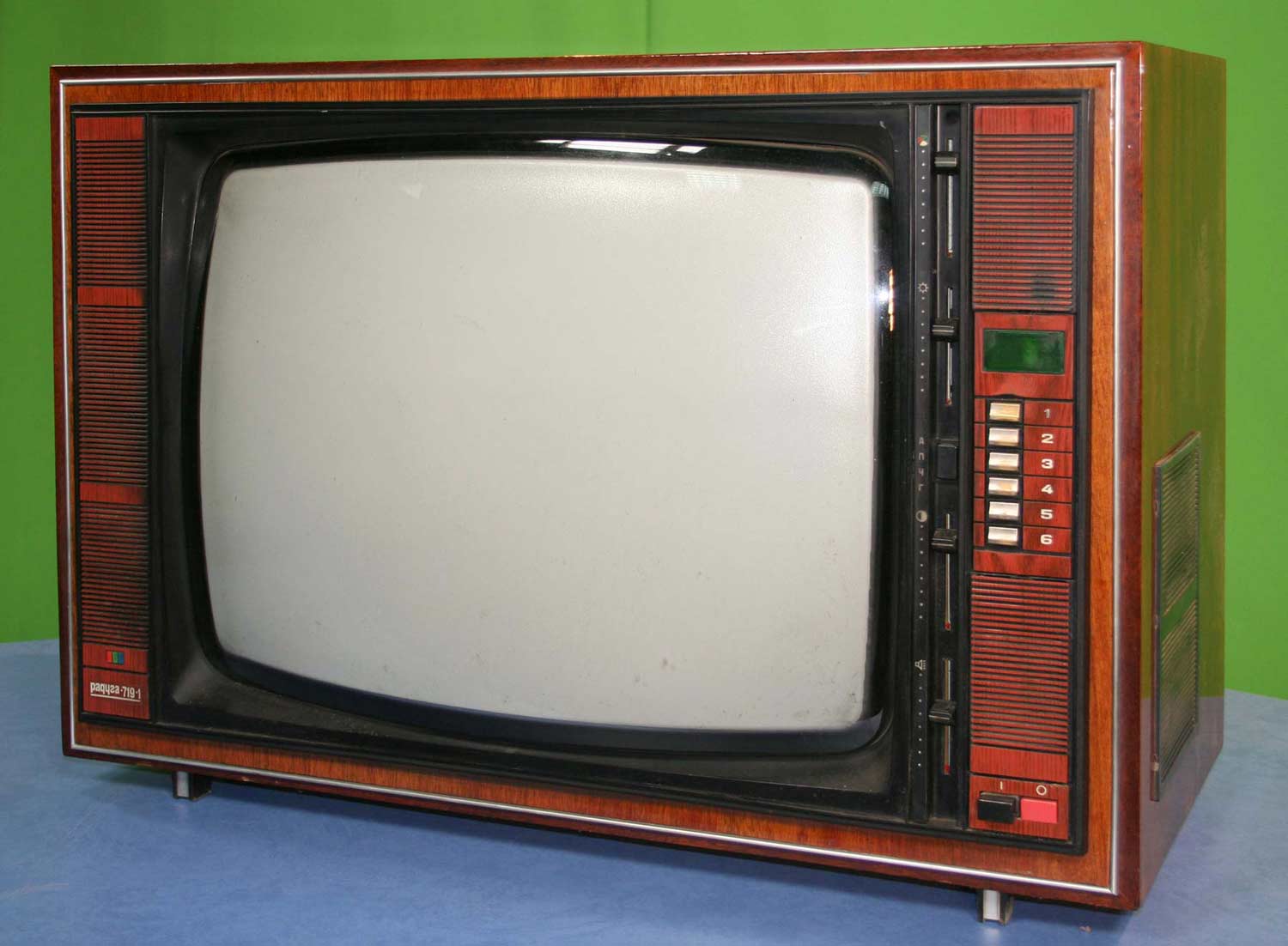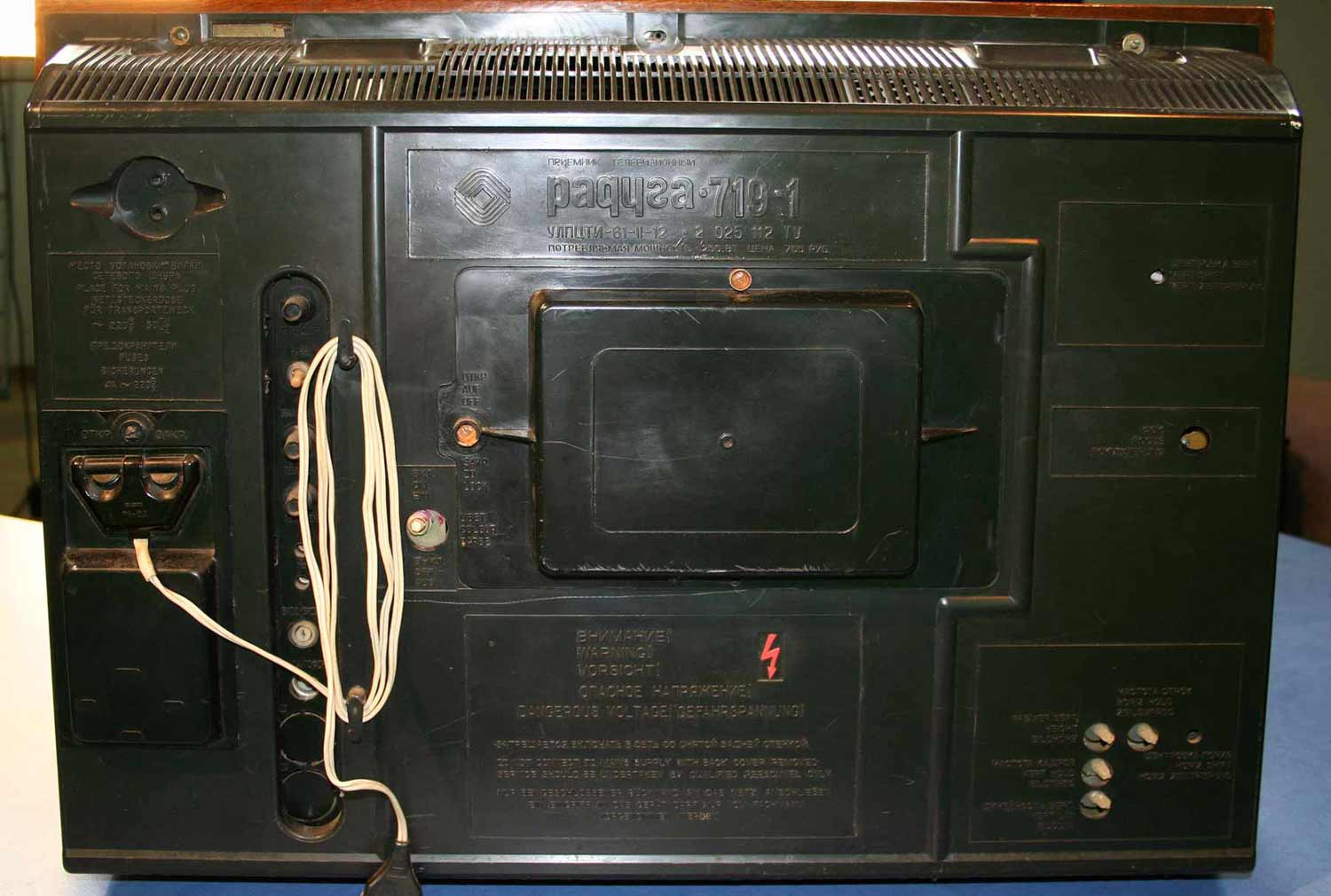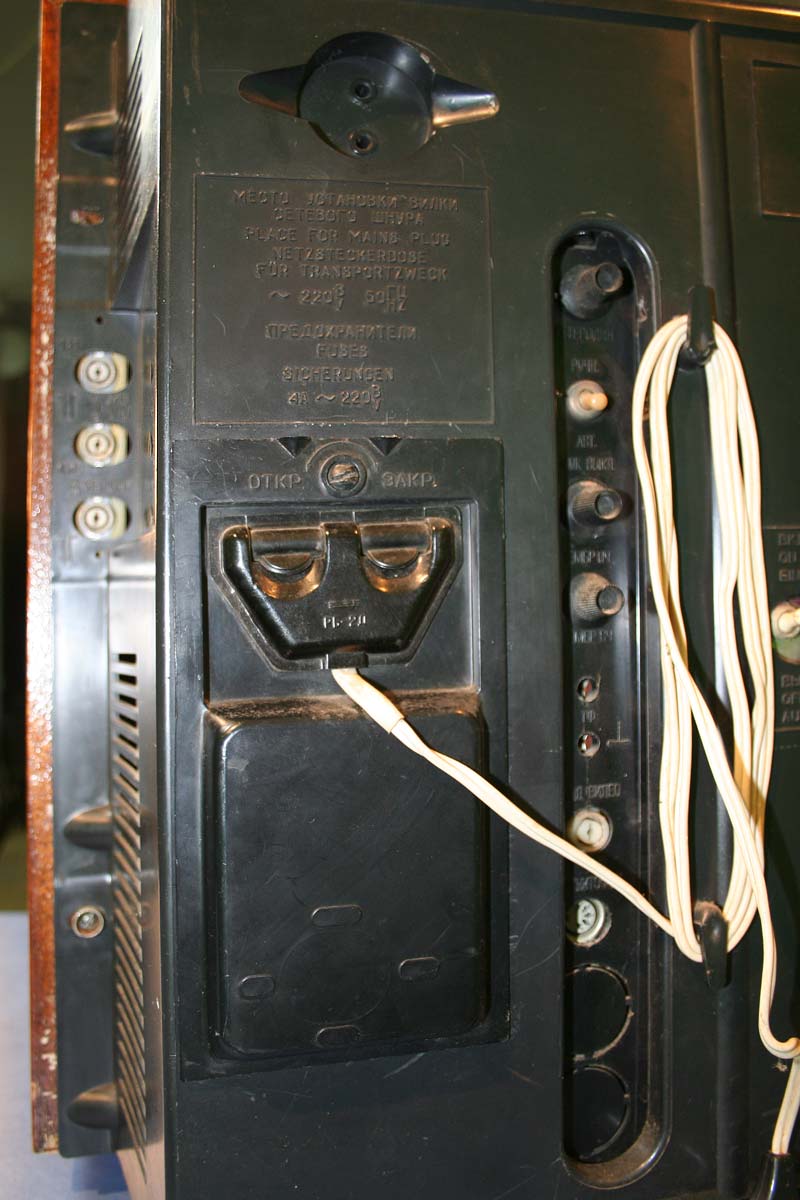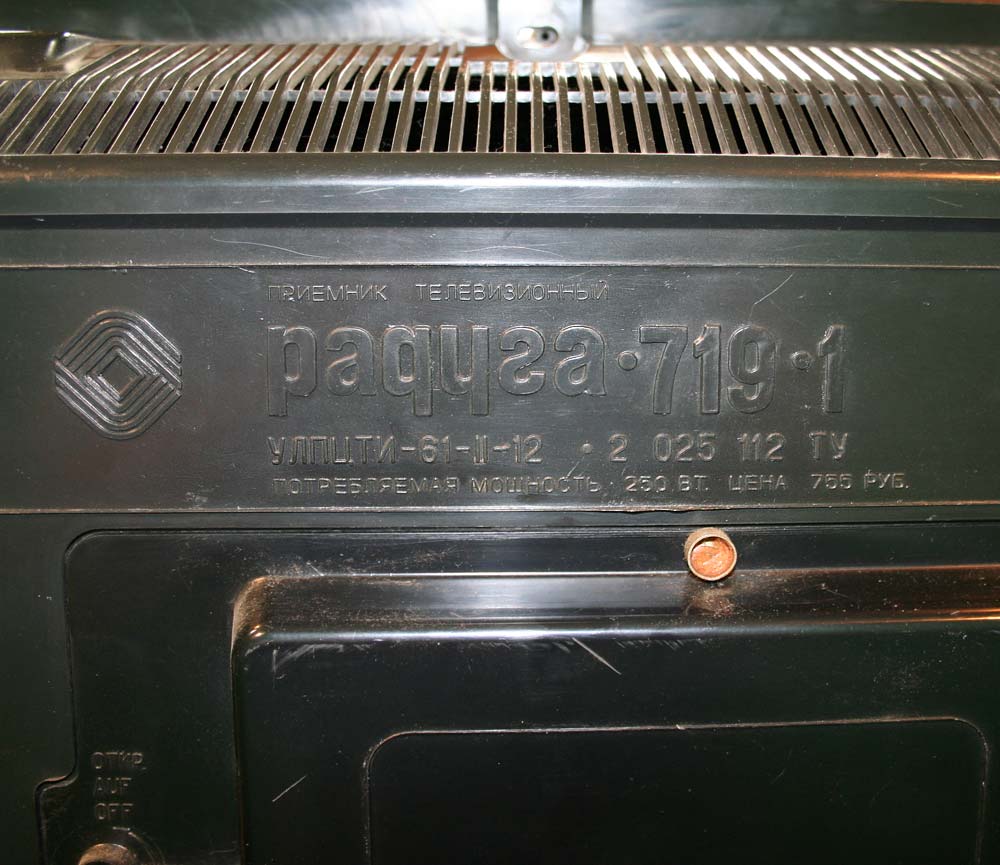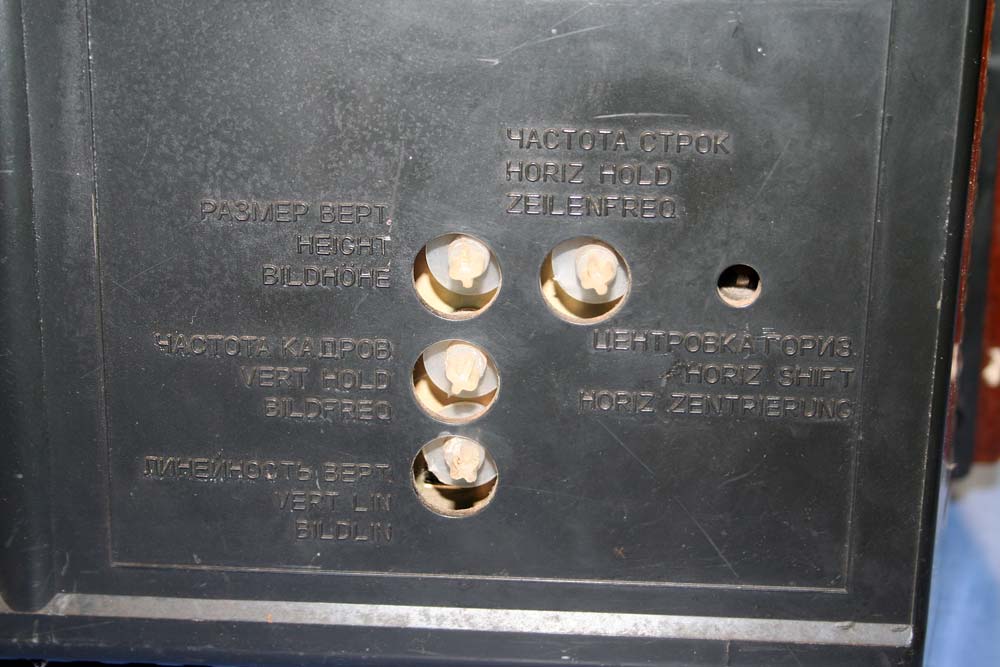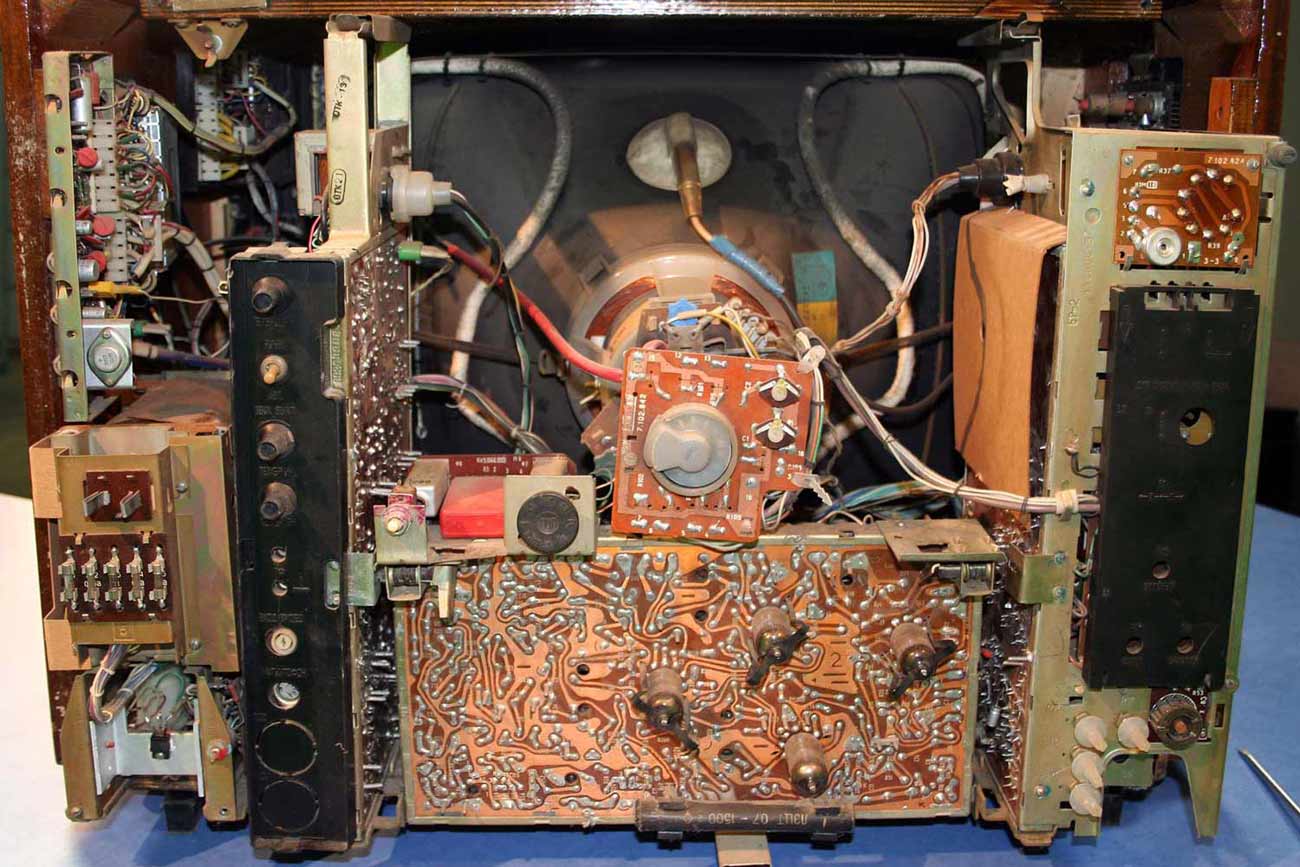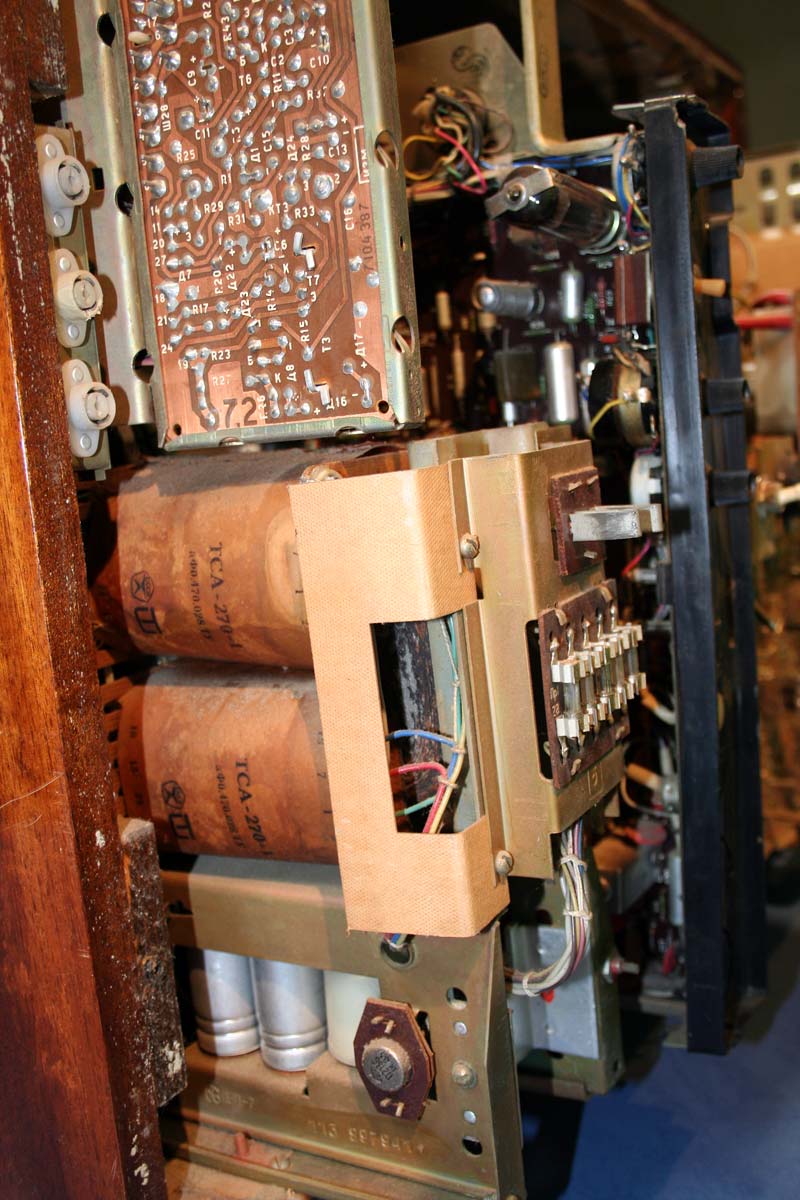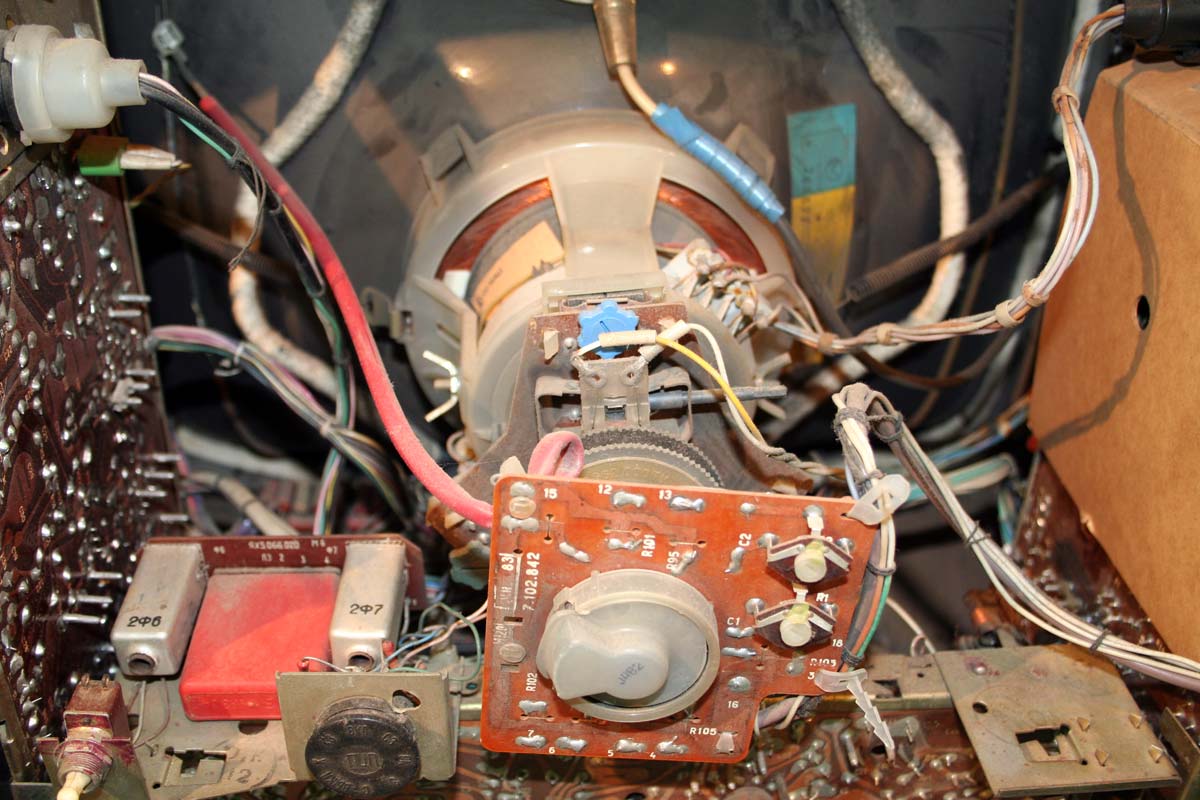Color television receiver '' Rainbow-719 ''.
Color TVsDomesticSince 1978, the television receiver of the color image "Raduga-719" has been produced by the Leningrad plant named after Kozitsky. The unified tube-semiconductor color television receiver of the 2nd class `` Raduga-719 '' (ULPTSTI-61-II-12) is designed to receive color and b / w image programs in the MW and UHF ranges (when the UHF unit is installed). The device was produced in a desktop design, with various finishes. The TV uses an explosion-proof kinescope 61LK3Ts or 61LK4Ts. The desired program is switched on by lightly pressing the corresponding key. Switching occurs using an electronic device, and the program number is shown by a digital indicator, if the selection of the desired sub-range is previously made and the position of the tuning potentiometer is adjusted. The TV has the ability to: connect a tape recorder to record sound; listening to it on headphones when the speaker is off. High sensitivity in combination with AGC allows reception at a distance from the TV center. APCG improves image quality and retains it when switching to another channel. The controls on the front panel allow you to change the volume, brightness, image contrast, saturation. To improve the quality of black-and-white image reception, an automatic shutdown of notch filters has been introduced into the circuit. Reducing the influence of interference is achieved by the AFC and F. The TV circuit provides automatic maintenance of the image size when the mains voltage fluctuates within 200 ... 230 V and automatic demagnetization of the kinescope when turned on. Image size 480x360 mm. Sensitivity in MV 55 µV, UHF 90 µV. Resolution in the center of 450 lines. Output power 2.3 watts. The range of reproducible frequencies is 80 ... 12500 Hz. Power consumption 250 watts. Dimensions of the TV 550x785x548 mm. Weight - 60 kg. The first TVs "Raduga-719", which were planned to be produced since 1977 to expand the range of names, looked like the model "Raduga-716", see the 1st photo in the gallery. But then they left this venture and in 1978 they began a full-fledged, but limited release of the improved model "Rainbow-719", see the 2nd photo in the gallery. Since 1982, the TV "Raduga-719-1" has been mass-produced - in terms of unification and design, it is almost the same as described, but with the ability to receive programs in the UHF range.